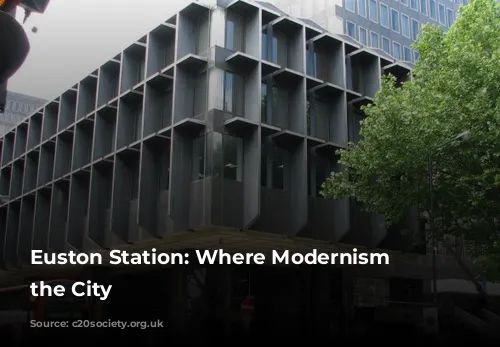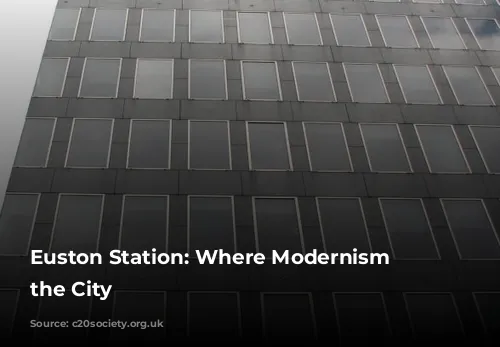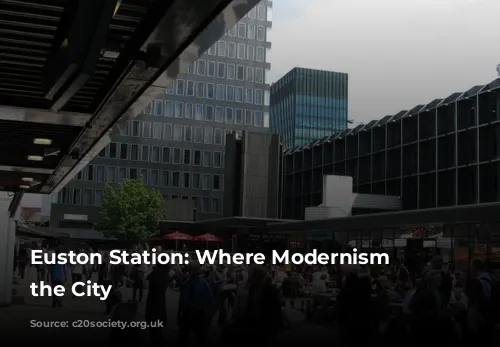Euston Station in London is a fascinating blend of old and new, where the grandeur of Victorian architecture meets the sleek lines of modern design. While many lament the loss of the original Victorian station, there’s much to admire in its modern replacement.
A New Face for an Old Station
Some might be surprised to hear that Euston Station, a key transit hub in London, stands as a champion of the city’s urban landscape. While the nostalgic might yearn for the Victorian glory of the original station, the modern Euston, built in the 1960s and 70s, presents a unique and compelling alternative. It’s a testament to the evolution of architecture, showcasing a different kind of beauty that seamlessly integrates with the city around it.
The new Euston is a product of two distinct phases of construction. The primary passenger hall, designed by R.L. Moorcroft, was completed in 1968, offering a spacious and functional environment for travelers. The surrounding office complex, designed by Richard Seifert and Partners, added another layer to the station’s urban fabric. Unlike the imposing grandeur of a Victorian station hotel, these towers create a sense of openness and connection to the city. The combination of these buildings, along with the surrounding green spaces, access roads, and historical elements, creates a harmonious and rewarding experience for visitors.
A Modernist Masterpiece
While the platforms themselves may lack the charm of the Victorian era, the interior of the station offers a quiet and reassuring order. The high ceilings, polished granite, and white tile create a sense of calm and stability, a perfect contrast to the bustling energy of the city. It’s not a grandiose space, but it’s efficient and purposeful, designed to put travelers at ease.
The real gem, however, lies in Seifert’s office complex. These sleek towers, clad in black stone, glass, and metal, embody a sophisticated elegance that draws inspiration from both modernism and a touch of retro-moderne. The corner windows, a hallmark of Seifert’s design, are particularly striking, reminiscent of a glamorous Viennese shopfront. The complex offers a fascinating blend of public and private spaces, seamlessly integrated into the city’s urban fabric.
A Place to Pause and Connect
The connection between the station and the surrounding city is a key aspect of Euston’s success. The forecourt, with its lively pub, courtyards, and covered passages, creates a vibrant hub that seamlessly blends with the street scene. The raised linking slab, with its distinctive metal fins and coffered ceiling, provides a striking visual and acoustic contrast to the station’s interior.
Perhaps the most captivating feature of Euston is its ability to offer a unique blend of public and private spaces. From the calm of the passenger hall to the elegant sophistication of Seifert’s towers, from the bustling forecourt to the quiet greenery, there’s a place for everyone at Euston. It’s a place where travelers can pause and connect with the city, a testament to the beauty and practicality of modern architecture.
The Future of Euston
Despite the station’s success, there are ongoing plans to redevelop Euston, driven by commercial interests and the ever-increasing flow of travelers. While the future of the station remains uncertain, one thing is clear: Euston, with its unique blend of historical charm and modern elegance, remains a vital part of London’s urban landscape. Whether you’re a weary traveler or simply someone looking to experience the unique charm of London, Euston offers a glimpse into the city’s dynamism and its ability to embrace the new while preserving the old.



